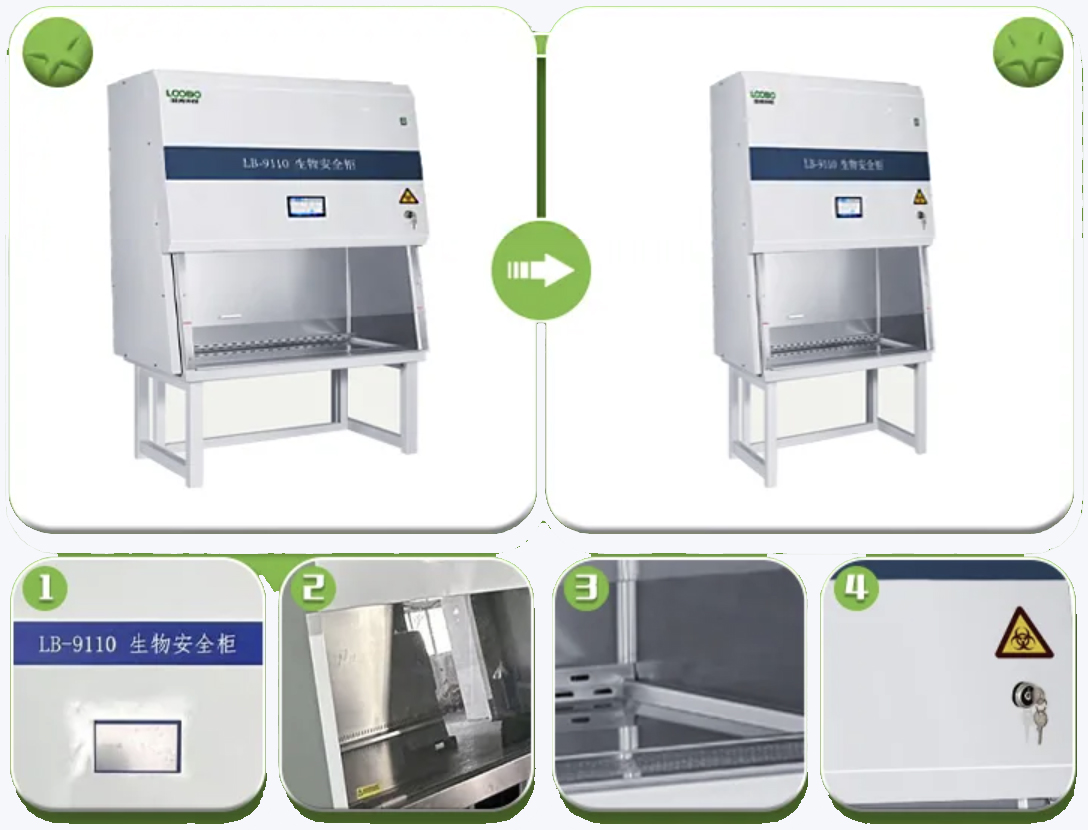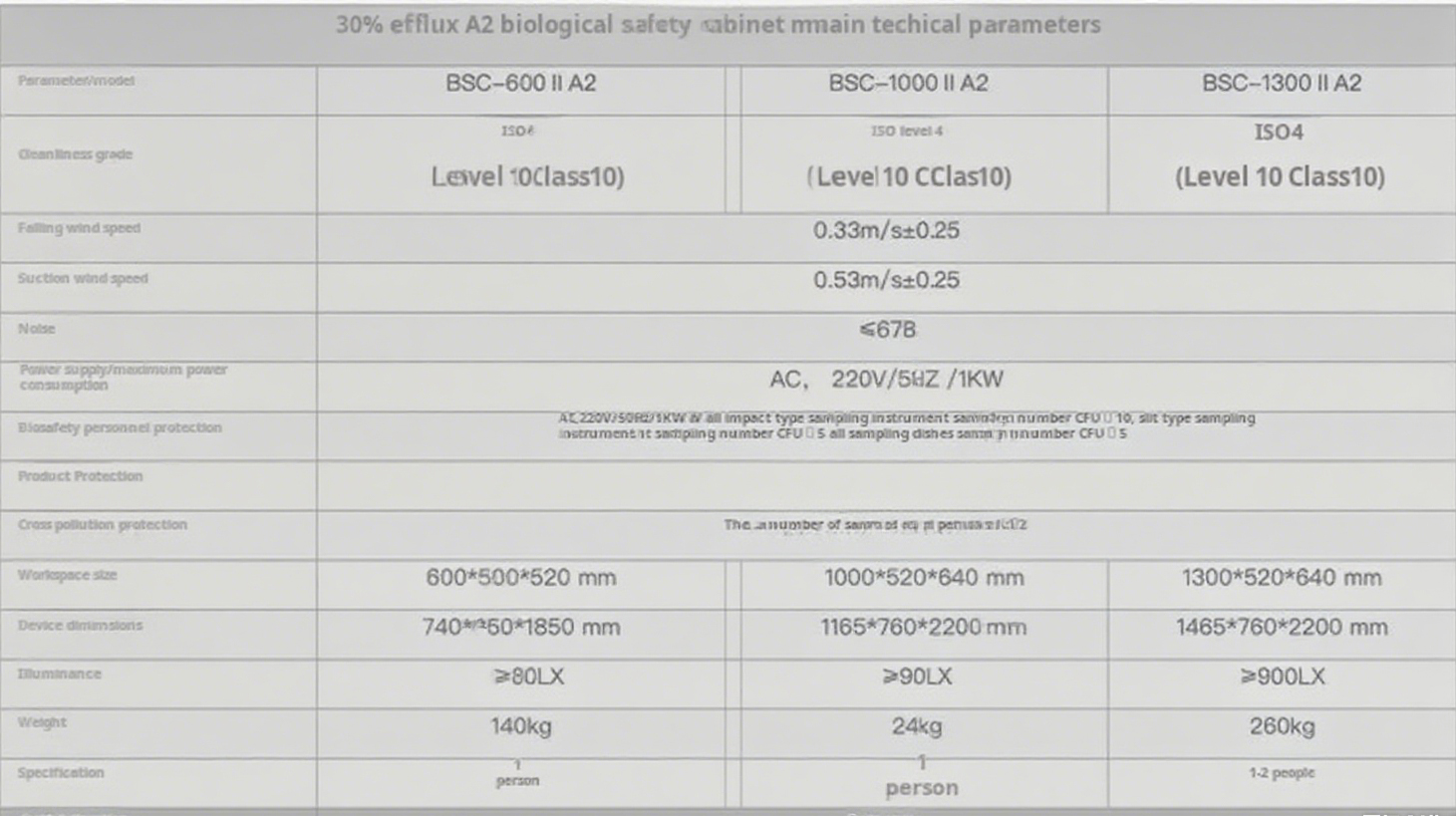Biological Safety Cabinets
A complete guide to understanding, selecting, and using biosafety equipment
Biological safety cabinets (BSCs) are critical components in modern laboratories, providing controlled environments that protect researchers, samples, and the surrounding environment from biological hazards. This guide covers their various names, types, standards, and selection criteria to help professionals make informed decisions.
Common Names for Biological Safety Cabinets
Biological safety cabinets are known by several terms, each emphasizing different aspects of their design and function:
- Biosafety cabinet: Highlights safety features for handling pathogens.
- Laminar flow hood: Refers to cabinets designed for sterile work rather than containment.
- Biological safety enclosure: Emphasizes protective environment for both user and samples.
- Clean benches: Focuses on sterile airflow but lacks containment features of true BSCs.
- Microbiological safety cabinet: Specifically used in microbiological research settings.

Biosafety Cabinet vs. Laminar Flow Hood
Though often used interchangeably, these terms describe distinct equipment with different functionalities:
| Equipment | Primary Function | Protection Scope |
|---|---|---|
| Biosafety Cabinet | Handles pathogens safely | Protects user, environment, and samples |
| Laminar Flow Hood | Provides sterile work area | Only protects samples (no user/environment containment) |
| Microbiological Safety Cabinet | Specialized for microbiological research | Offers containment for infectious agents |
What Makes the Best Biological Safety Cabinet?
The ideal BSC depends on your specific work requirements, biosafety level, and laboratory conditions. Key features to look for include:
- Compliance with international standards like NSF/ANSI 49 and ANSI
- Efficient airflow systems and high-quality hepa filtration
- Class II Type A2 cabinets: widely preferred for handling biological materials, offering comprehensive protection
- Adjustable airflow controls and reliable failure alarms
- Products from reputable Manufacturers with strong service support

Types of Biological Safety Cabinets
1. Class I Biological Safety Cabinets
Provide basic protection by drawing air through a hepa filter, offering user safety with limited environmental containment. Ideal for working with low-risk biological materials.
2. Class II Biological Safety Cabinets
The most commonly used type, providing comprehensive protection for personnel and environment through advanced HEPA filtration and directional airflow. Subtypes include:
- Type A1
- Type A2
- Type B1
- Type B2
These cabinets are designed for specific applications involving hazardous pathogens and chemical agents, with flexible configurations for various laboratory needs.
3. Class III Biological Safety Cabinets
Gas-tight cabinets designed for high-risk biological materials, offering the highest level of protection through a completely sealed environment for maximum containment.

Standards for Biological Safety Cabinets
Compliance with established standards ensures the safe and effective operation of biological safety cabinets. Key standards include:
| NSF/ANSI 49 | Primary U.S. standard outlining performance criteria for safety and design of biological safety cabinets. |
| ISO 14644-1 | Specifies cleanliness levels for controlled environments, with important implications for BSC operation and placement. |
| WHO Guidelines | Offer comprehensive guidance on safe use, particularly for handling infectious agents, emphasizing technical standards and operational protocols. |
How to Choose a Biosafety Cabinet
Selecting the right BSC involves careful consideration of several factors to ensure safety, compliance, and efficiency:
- Assess the Risk Level: Determine the risk classification of materials you'll be working with. Class I cabinets suffice for low-risk materials, while higher-risk pathogens require Class II or III cabinets.
- Consider Work Type: Evaluate your containment needs versus the requirement for a clean environment. Class II cabinets offer versatility with both user and sample protection.
- Evaluate Space and Accessibility: Ensure the cabinet fits properly in your laboratory space, allows easy access for operation, and considers airflow patterns and user comfort.
- Consult Experts and Standards: Engage with manufacturers for professional advice and ensure any cabinet selected complies with relevant standards like NSF/ANSI 49.
By carefully considering these factors, laboratories can select the most appropriate biological safety cabinet, enhancing overall safety and maintaining research integrity
Comprehensive Guide to Biological Safety Cabinets | For educational and informational purposes only
 +86 18186671616
+86 18186671616 Jason@cleanroomequips.com
Jason@cleanroomequips.com
 MENU
MENU


